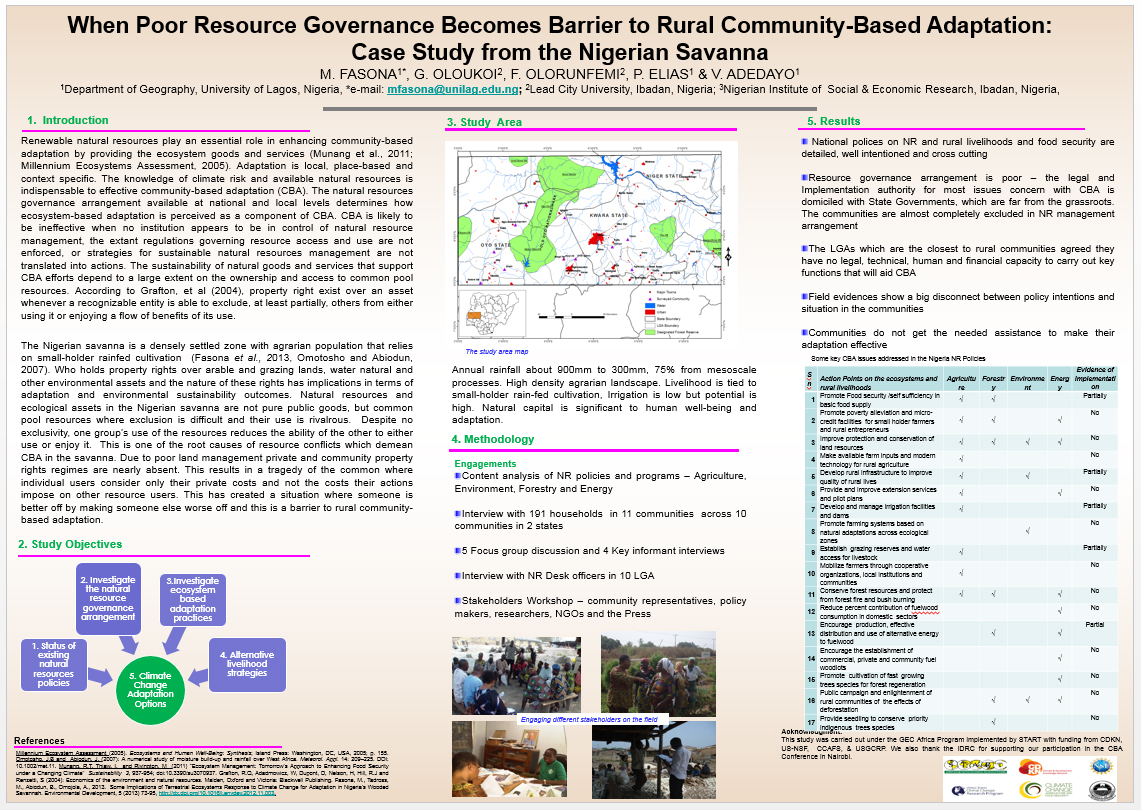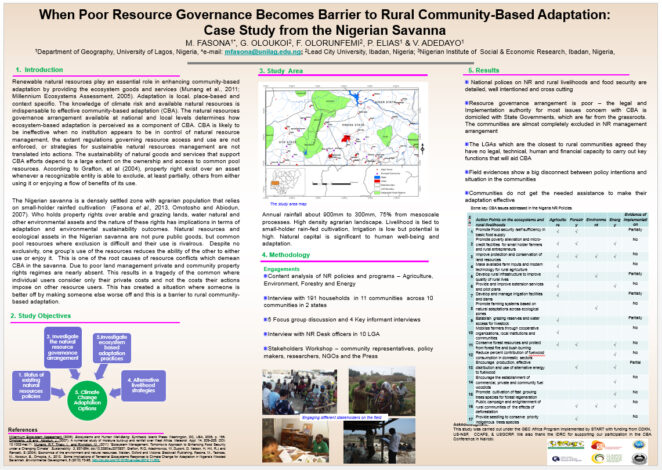When Poor Resource Governance Becomes Barrier to Rural Community-Based Adaptation: Case Study from the Nigerian Savanna


Click to enlarge.
The 9th International Conference on Community-Based Adaptation (CBA9) took place in Nairobi, Kenya, from April 24-30 2015. The CBA series of conferences focus on the latest developments in community-based adaptation to climate change. The theme of this year’s event was “Measuring and enhancing effective adaptation”, and all the posters presented at the conference were summaries of projects related to the conference theme. This poster is one of the posters featured at the conference. For more information about CBA9, visit: www.cba9.org. If you want to learn more about community based adaptation, please visit the GICBA platform on weADAPT.
Introduction
The Nigerian savanna is a densely settled zone with agrarian population that relies on small-holder rainfed cultivation (Fasona et al., 2013, Omotosho and Abiodun, 2007). Who holds property rights over arable and grazing lands, water natural and other environmental assets and the nature of these rights has implications in terms of adaptation and environmental sustainability outcomes. Natural resources and ecological assets in the Nigerian savanna are not pure public goods, but common pool resources where exclusion is difficult and their use is rivalrous. Despite no exclusivity, one group’s use of the resources reduces the ability of the other to either use or enjoy it. This is one of the root causes of resource conflicts which demean CBA in the savanna. Due to poor land management private and community property rights regimes are nearly absent. This results in a tragedy of the common where individual users consider only their private costs and not the costs their actions impose on other resource users. This has created a situation where someone is better off by making someone else worse off and this is a barrier to rural community-based adaptation.
Study Objectives
1. Status of existing natural resource policies. 2. Investigate the natural resource governance arrangement. 3.Investigate ecosystem based adaptation practices. 4. Alternative livelihood strategies. 5. From considering the points above, explore Climate Change Adaptation OptionsMethodology
- Content analysis of NR policies and programs – Agriculture, Environment, Forestry and Energy
- Interview with 191 households in 11 communities across 10 communities in 2 states
- 5 Focus group discussion and 4 Key informant interviews
- Interview with NR Desk officers in 10 LGA
- Stakeholders Workshop – community representatives, policy makers, researchers, NGOs and the Press
Results
- National polices on NR and rural livelihoods and food security are detailed, well intentioned and cross cutting.
- Resource governance arrangement is poor – the legal and Implementation authority for most issues concern with CBA is domiciled with State Governments, which are far from the grassroots. The communities are almost completely excluded in NR management arrangement.
- The LGAs which are the closest to rural communities agreed they have no legal, technical, human and financial capacity to carry out key functions that will aid CBA.
- Field evidences show a big disconnect between policy intentions and situation in the communities.
- Communities do not get the needed assistance to make their adaptation effective.
This poster was produced by M. Fasona, G. Oloukoi, F. Olorunfemi, P Elias, & V. Adedayo.
(0) Comments
There is no content